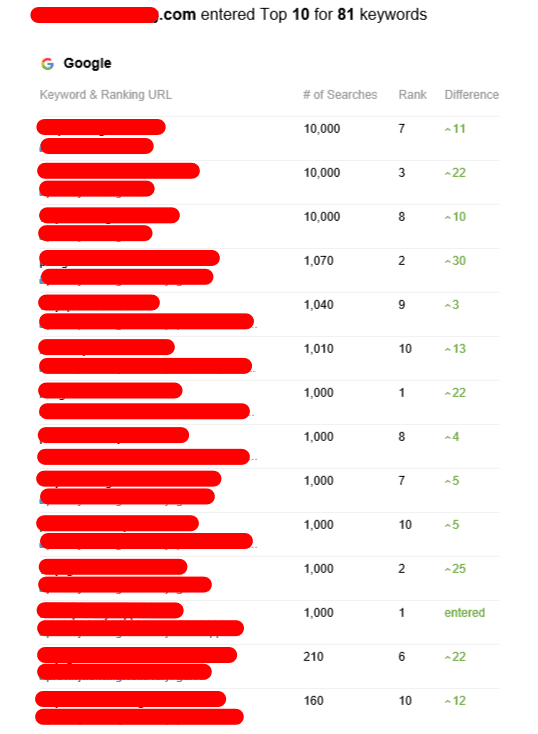Backlink Tier - The Hierarchy of Backlinks That Scale Your SEO Campaign

Backlink tier refers to the hierarchy of links you create in order to boost your SEO campaign. Each level provides a layer of protection against Google and its penalties.
To make it work, you'll need to spend an enormous amount of effort and time. This is because Google takes a long time to locate new backlinks, and then evaluate their quality on a per-link basis.
First-Tier Links
The first level of links that will lead to your piece of content must be high-quality dofollow backlinks that are from reliable websites. These are referred to as Tier 1 backlinks, and they are the foundation of your link-building strategy. They give your website sufficient domain authority to rank well on search engine result pages. If, for instance, your blog post was published on HubSpot and included a tier-one link to SearchEngineLand's compilation of Link Building Statistics then SearchEngineLand’s web page rankings will benefit from the link equity that HubSpot transferred to SearchEngineLand.
The second tier of backlinks can be more diverse, and they can include low-quality links, such as spammy forum posts or low-quality bookmarking websites and directories. The primary goal of Tier 2 is to create content of high-quality that links back to your first-tier backlinks. This is because content that is of high quality will improve the content it is placed in and not make it appear as a separate item to SEO purposes.
To build a successful tiered marketing campaign, you'll require investment in high-quality tools and content such as RankerX or GSA. The time and effort spent manually performing a tiered campaign is worthwhile if you intend to see the increase in rankings of a well designed backlink pyramid.
Second-Tier Links
Tiered link building is intended to allow users to navigate through other pages and eventually get to your website. To accomplish this, it's important to choose second-tier backlink sources that are relevant to your industry and site. As opposed to profile profiles for accounts guest blog posts are able to perform very well for this function because they offer valuable content that people want to consume.
You should be cautious about using link on forums that are tier-2 or other sites with poor quality. Instead, use high-quality pages for articles in the industry or guest posts. These links will appear more natural and will have a more influence on your search engine ranking. Additionally they're more likely be recognized by Google as having passed link equity, which can increase their ranking value in SERPs.
If you build tier two links in the hopes of boosting your SEO rankings You must be aware that it is difficult to get these types of high-quality backlinks manually. It takes months to solicit guest blog posts from first-tier publishers and even longer to wait for them to be published. Additionally, it may take weeks to see outcomes of your efforts when it comes to creating new traffic and online conversions.
Many SEOs make use of automated tools to create second-tier backlinks. But, this method could violate Google's Webmaster guidelines and could result in being penalized.
Third-tier Links
The number of links on this level is enormous and may even be considered spammy. They are shared on social media platforms and on websites that allow user-generated content like Quora. They are used to index tier two links but do not pass link equity onto the resource that is promoted. In general, they are nofollow links. At this point marketers are more focused on quantity rather than quality. They use tools to post numerous hyperlinks on forums, in comment sections of articles and blog posts, in directories and in other similar locations. This is where tiered link building is a grey area and violates Google's webmaster guidelines.
Tiered link-building campaigns need an immense amount of time and effort to be successful. It can take days or even a month to get Google to rank one backlink, and then it could take weeks or even months to observe a significant impact on SEO. 2 tier backlink must be patient and employ a meticulously-planned content strategy.
Marketers should also avoid using too many automated tools to achieve this level of linking. These tools could be in violation of rules regarding search engine optimization and result in penalties. It is recommended to manually choose and post hyperlinks on relevant donor websites instead of using automated systems such as GSA or RankerX. This will prevent search engines from penalizing you for links that are not of high quality.
Fourth-Tier Links
Tiered link building is still an effective method for gaining the rank of websites. However it is now that Google has made major efforts to stop "black black" SEO practices, tiered linking methods have suffered a blow.
They are classified as gray-hat SEO techniques and are punished for their deliberate use. Tiered links are backlinks constructed on different levels of the link pyramid. These backlinks are primarily used to increase a resource's ranking in search engine results. The page promoted will be more prominent than its competitors and will also receive more organic traffic.
The quality of backlinks in this tier takes the plunge and are typically nofollow. Additionally this tier may be composed of low-quality social media profiles, directories and article networks. These links can be made organically or through strategic automation solutions. However they must be diverse in terms of niches, domains and importance.
These backlinks, in addition to being low-quality and nofollow could also create problems when they're not diversified enough. This is due to the fact that Google has a sophisticated team of hounds who constantly look out for patterns in backlink profiles as well as techniques. If they do find them, not only could the link-building team be penalized, but so can its clients.
